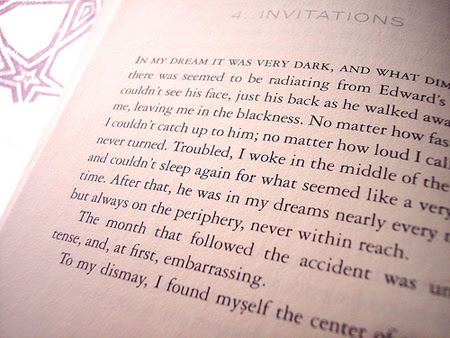By: Hannah Zhang
“Twilight” is a popular fantasy romance novel for so many adolescent girls with supernatural elements such as werewolves and vampires. Isabella “Bella” Swan is a 17-year-old girl from Phoenix, Arizona, who moves to Forks, Washington to live with her father (her parents are divorced). Here, she finds her life critically endangered at every moment, ever since she captures the attention of a vampire, Edward Cullen, for no particular reason. On the surface, this should seem like the dream life so many people would want to live. This stereotype is supposed to be denied throughout the story, yet with the way it’s written, only seems to encourage it. In an accompanying novel, “Midnight Sun,” where readers take a glimpse at “Twilight” from the perspective of the mysterious Edward Cullen, they find out exactly what sets Bella apart from the other girls in the series: main character syndrome.
Bella Swan would be the most ordinary person if she were not the female lead of a fantasy novel. What makes her stand out is just the fact that the only other girls in the series are the shallowest people anyone could ever imagine and written in a way to make her seem like a good person. Perhaps this is what makes her so appealing to “Twilight” lovers: being so ordinary and one-dimensional–making the story so easy to self-insert.
A recurring theme of writing within the “Twilight” series is the complete lack of character depth that resembles the quality of Wattpad fanfictions about established characters. There’s only one difference: “Twilight” is not a spinoff about characters we already know– it carries the burden of exploring the different facets and aspects of its characters–something it does not do. It’s like everyone in the series exists for the female lead. Bella’s girlfriends to make her look like a competent lead. Bella’s admirers to establish her beauty. Perhaps even Edward Cullen, to make her seem like someone special and different, to elevate her status from background character to main lead.
The worst part of the “Twilight” series is perhaps the way it revolves around themes of forbidden romance but never makes the reader feel the risk and danger they ought to feel. Not once has the dangers of being so close to a vampire–that Edward continuously emphasizes to Bella throughout the story–ever felt real, signifying “Twilight’s” failure in providing the thrill readers should have received.
In a way, “Twilight” is a good book to read when you just want to turn your brain off and enjoy some self-insert fiction–but it truly does a terrible job at conveying the core themes of such a beautiful and iconic trope.











